
”Where is Biosphere 1?”, people ask. Unless you’re an astronaut or a billionaire, you’re probably standing on it. Yes, the Earth is the first and original biosphere known to humankind. So, what’s Biosphere 2? It was an experiment conceived in the 1980s and executed in the early

”Where is Biosphere 1?”, people ask. Unless you’re an astronaut or a billionaire, you’re probably standing on it. Yes, the Earth is the first and original biosphere known to humankind.
So, what’s Biosphere 2? It was an experiment conceived in the 1980s and executed in the early 1990s to see if it was possible to construct and live in a completely self-contained environment.
So who cares? Well, you should. Now more than ever. One area of interest was to see whether a colony in a hostile environment would be possible. Think the Moon, or Mars, or undersea. Although perhaps not an intended outcome, Biosohere 2 taught us a lot about what happens when things like the CO2-to-O2 ratio get out of balance.
The original idea was for a team of eight people to be sealed in for two years. At least that was the plan. Stuff happened and the project was shut down early. The press made much of every setback and interpersonal scandal. The result is that today if someone knows anything at all about Biosphere 2, they probably think of it as a somewhat comic failure.
I find this reaction annoying. The idea that a relatively small, privately funded group could design something of this scale and have everything go right is unrealistic. It also fails to recognize that science often learns as much from failure as success.
If you want to know more about the history of Biosphere 2, this is a good place to start.
Biosphere 2 is owned today by the University of Arizona and is used as an environmental research facility. Here’s the official web site. When you think about it, a place where you can vary temperature, oxygen level, humidity and so on, then observe the effect on plant and animal life, has tremendous value.
On the other hand, there’s no denying that the schemes, skullduggery and, yes, sex that occurred during the original project make for an interesting story.
Let’s begin our short tour, shall we?
Biosphere 1 (“Earth” as most of us call it) requires a tremendous amount of energy to function. Fortunately, the sun is there to provide it. B1 also throws off huge amounts of energy in the form of heat and other kinds of radiation.
Biosphere 2 substitutes diesel and natural gas powered generators for the sun. In a sense, these generators also evacuate waste heat via air conditioning and ventilation systems.
This set of round-top buildings is the power control station, containing not only generators, but all kinds of monitoring and control systems. The two ribbed buildings to the far right are cooling towers.
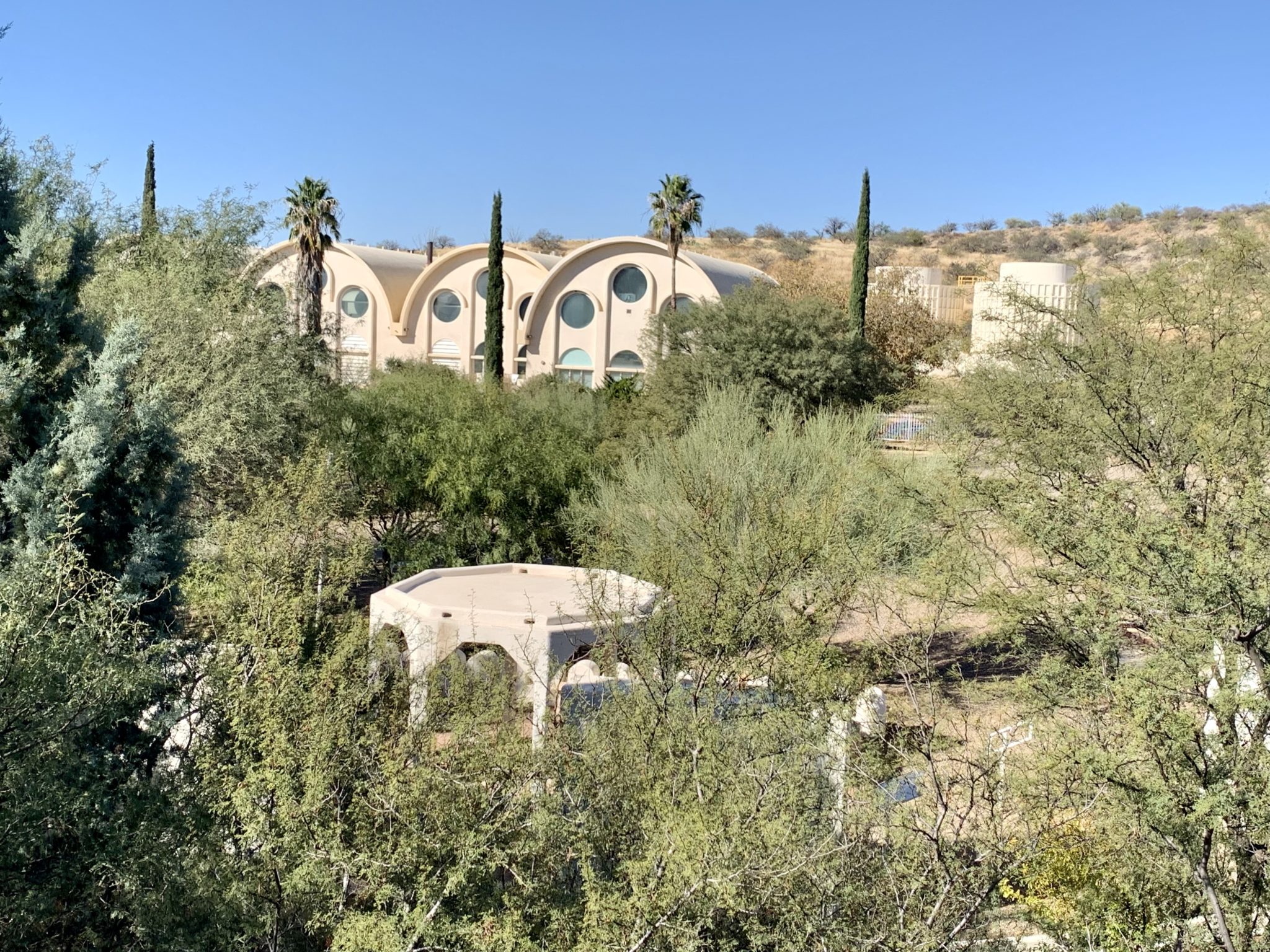
This is where the adventure began for the original team of eight “bionauts”: the airlock. Bear in mind that although they could not leave, spectators were free to poke around outside, peer in windows, and generally intrude.
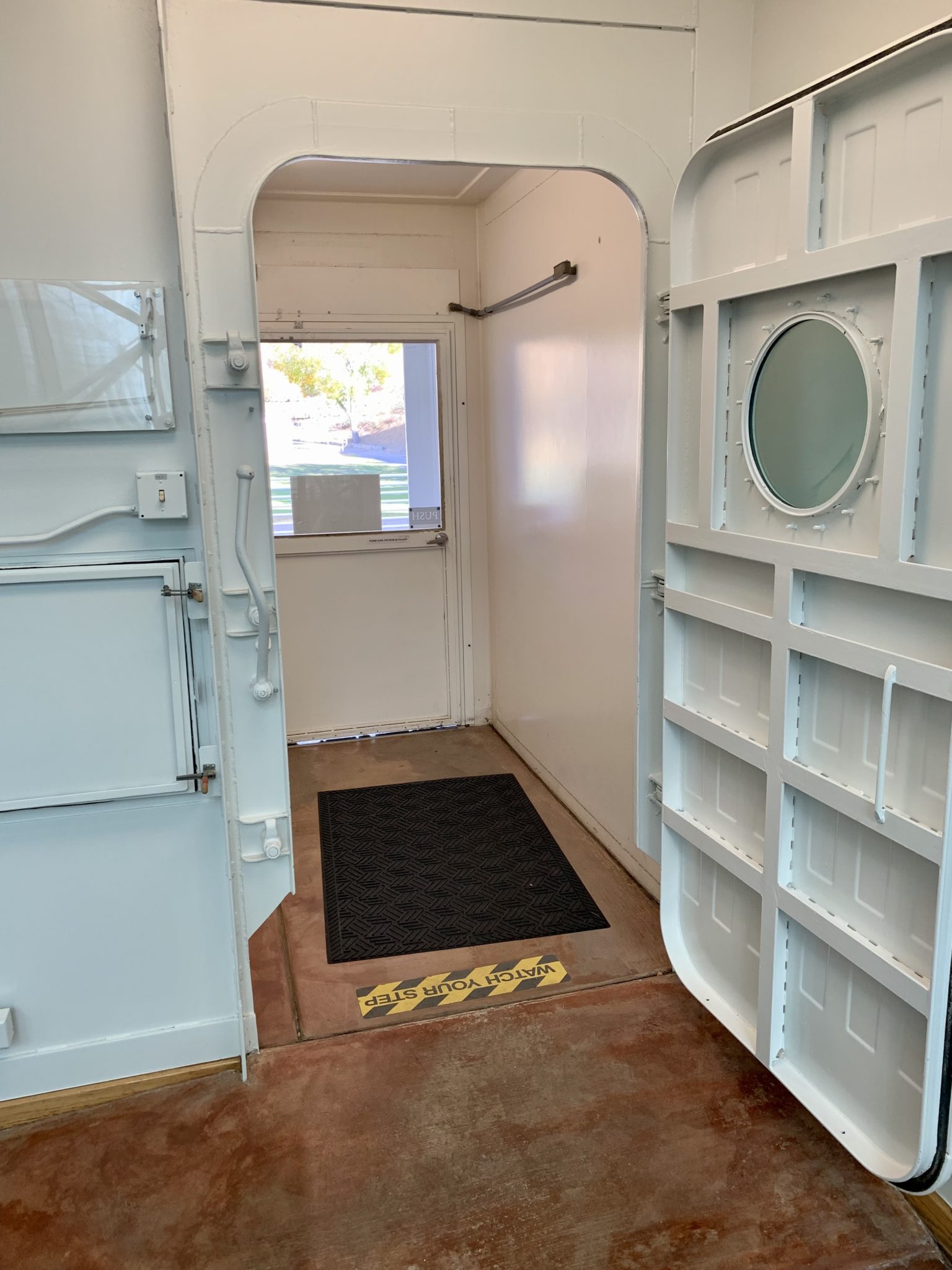
The tall building to the left rose above crew quarters. At the top was a library. The photo below shows the circular ascent to the top. Given the crew’s calorie-deficient diet, it’s little wonder that the library was lightly used.
The dome at the far right is one of two “lungs”. Each contains a huge rubber-like bladder that would rise as air inside the sealed facility warmed up and fall as the air cooled. Without the lungs, a hot day could have blown out windows.
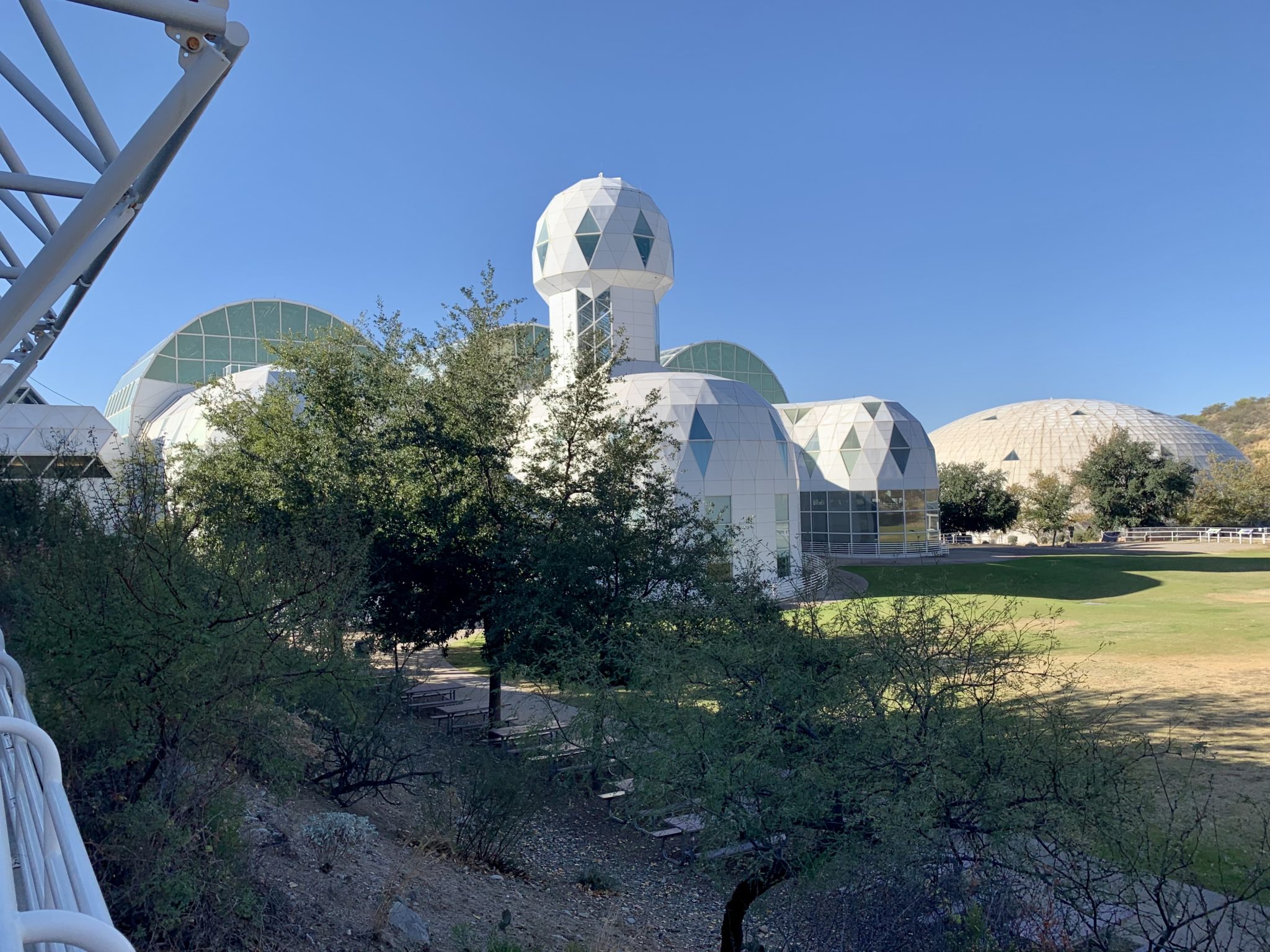
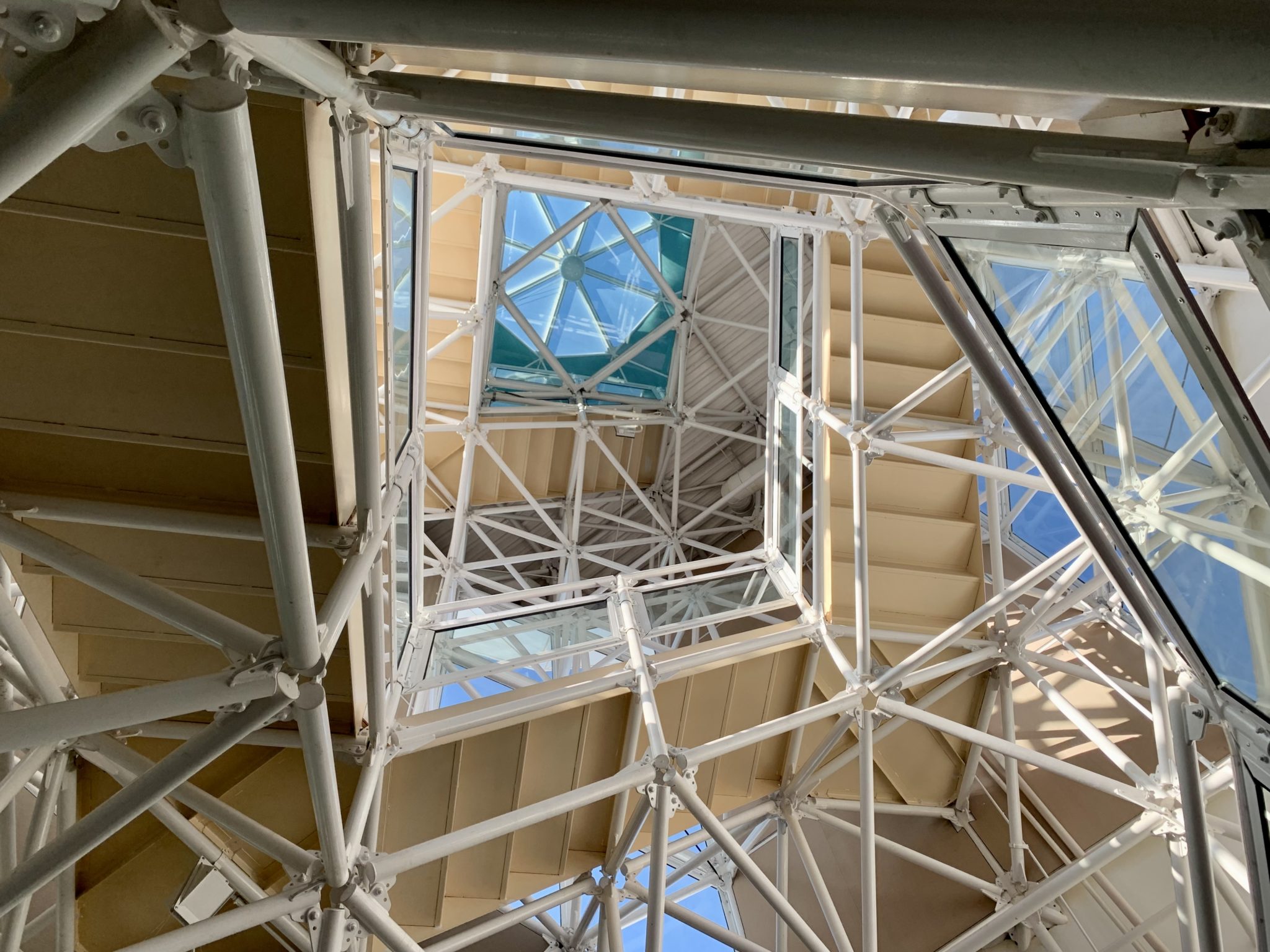
A very Biosphere way to support a tree!
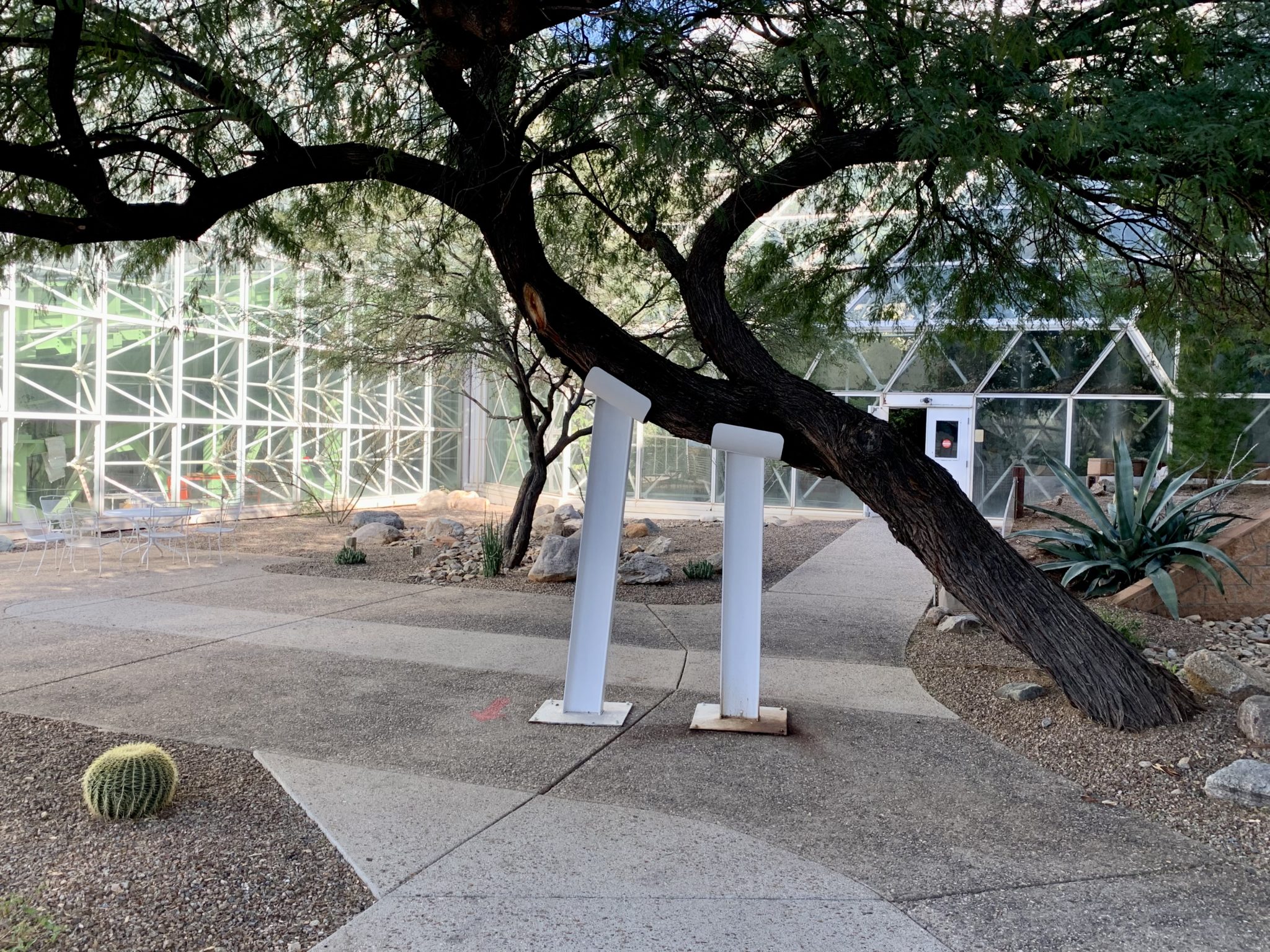
This area was originally the farm. Here, bionauts raised almost everything they ate from corn to chickens. A few things like fruit were found in the “forest” area (see below).
Today each of the three arched areas contains a huge sloped platform used to study what happens to water as it runs down a slope. It’s called the Landscape Evolution Observatory (LEO).
As you can imagine there are a squillion variables to this. It turns out that we really don’t know much about water once it enters the soil. Later, as more is learned, plants will be added to do more complicated experiments.
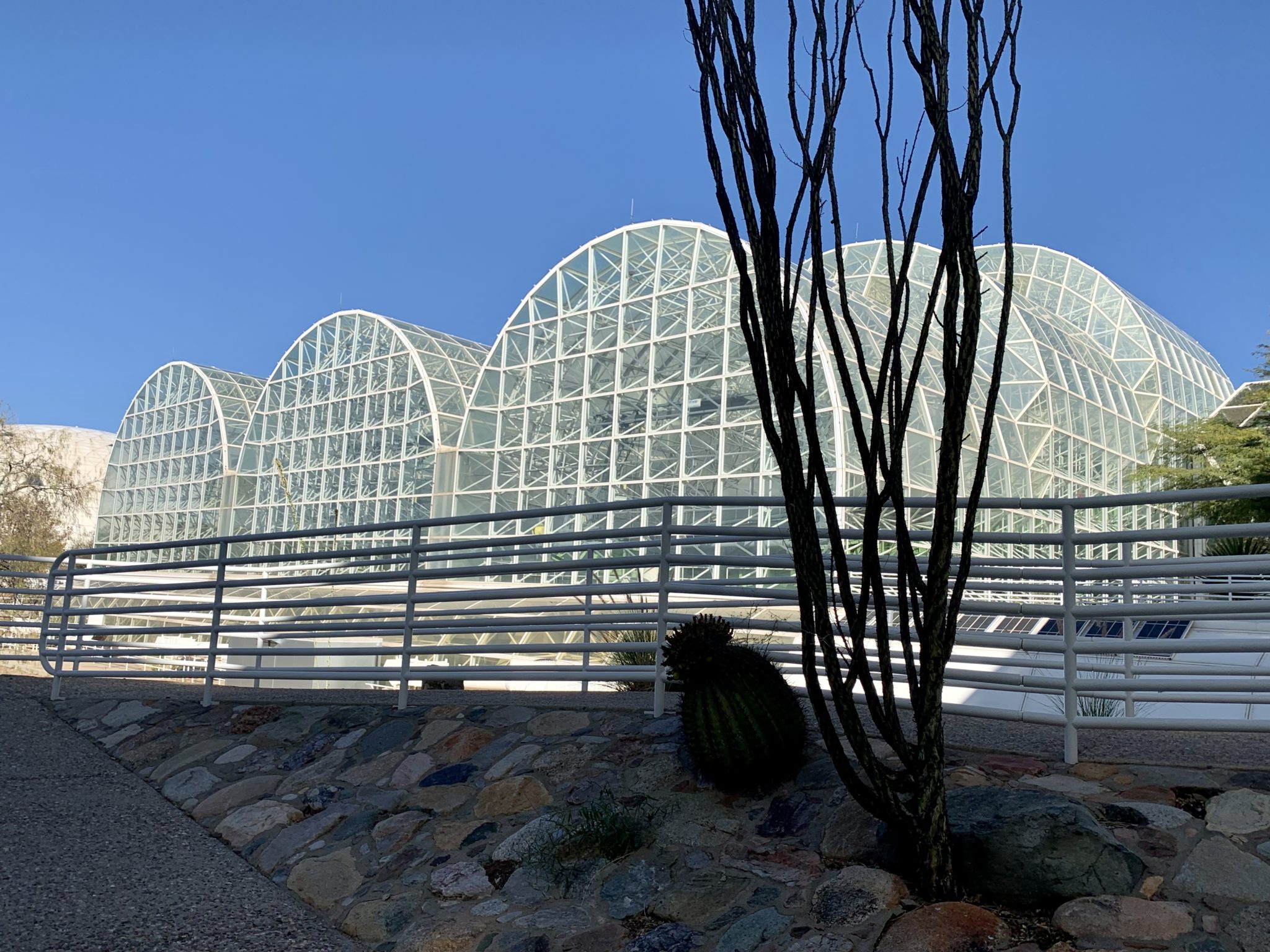
I will call this huge wing of Biosphere 2 “the Forest”. It’s primary function was to generate breathable air. There are also various fruits and veggies. At one end of the building is a high-humidity desert as found in Northern Mexico.
That’s our old friend, and my former running buddy, Arlene standing with Mary Anne.


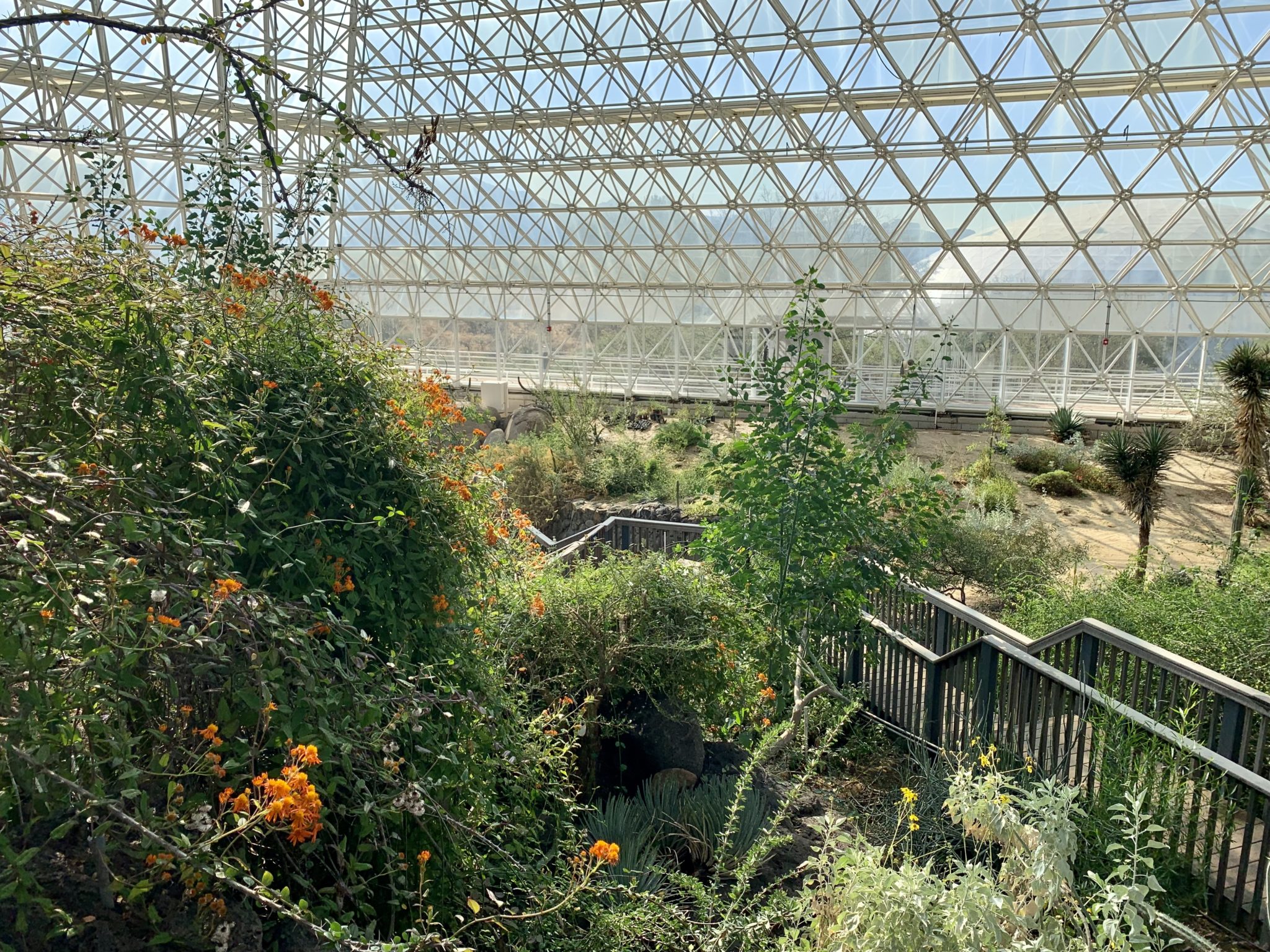
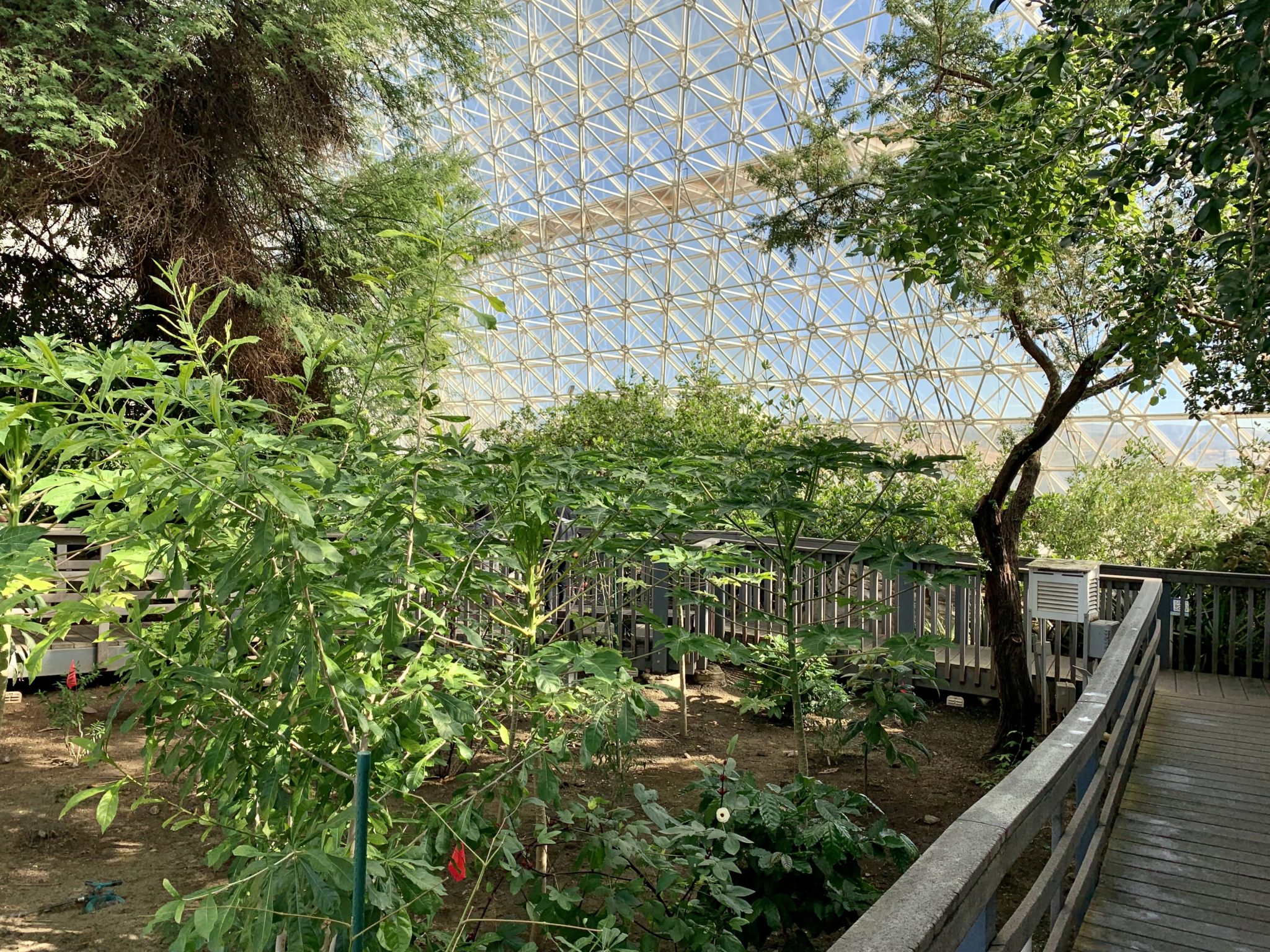
We’re heading to the artificial ocean, but I couldn’t pass by this beautiful tree without taking a photo of its bark.
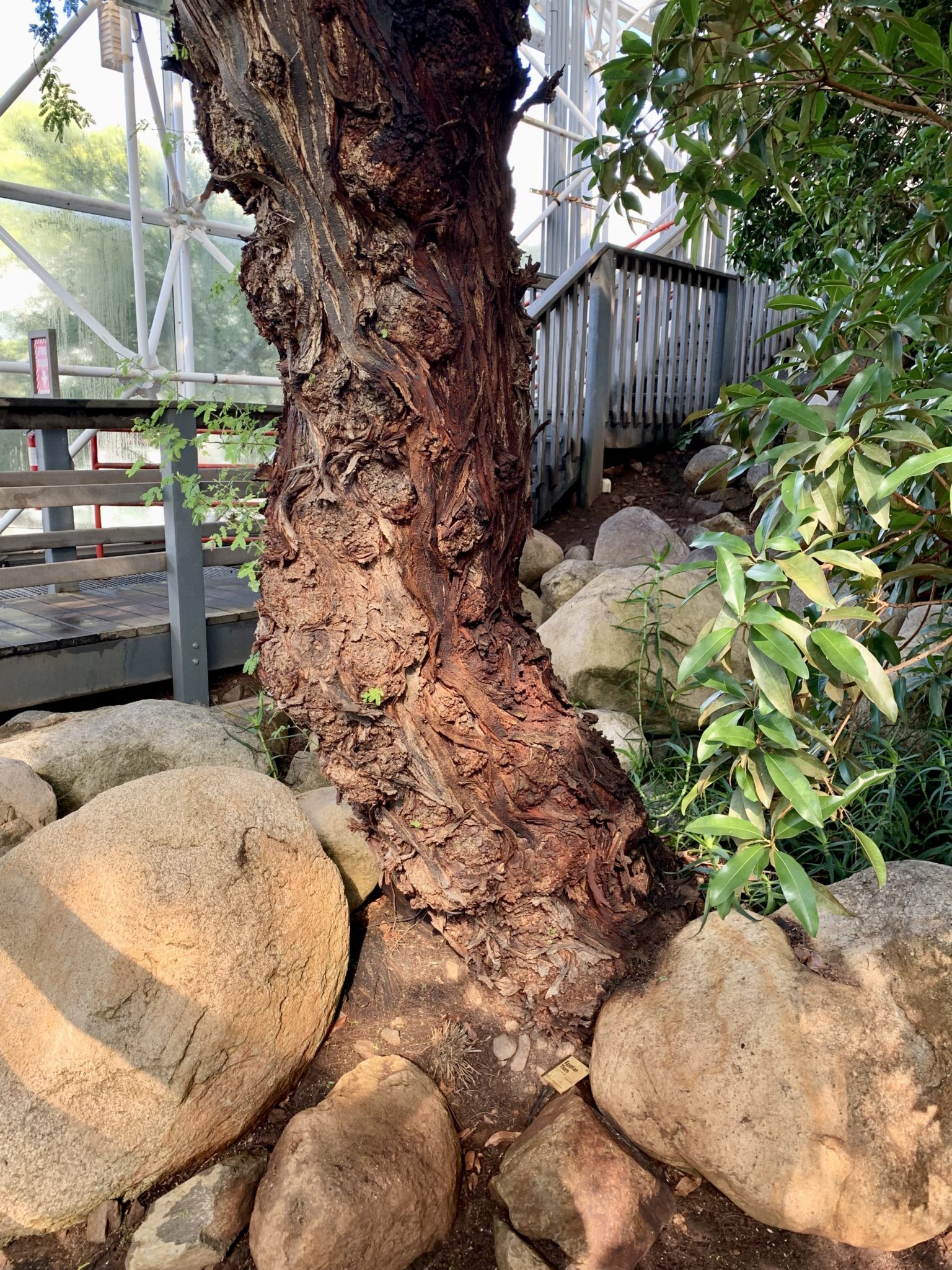
The “ocean” provided food and, I’m sure, served other purposes. It’s planned to be used to study the effects of water temperature, Ph and other factors on coral colonies. In case you are unaware, the world’s great coral reefs are in big trouble. The southern end of the Great Barrier Reef is mostly dead.
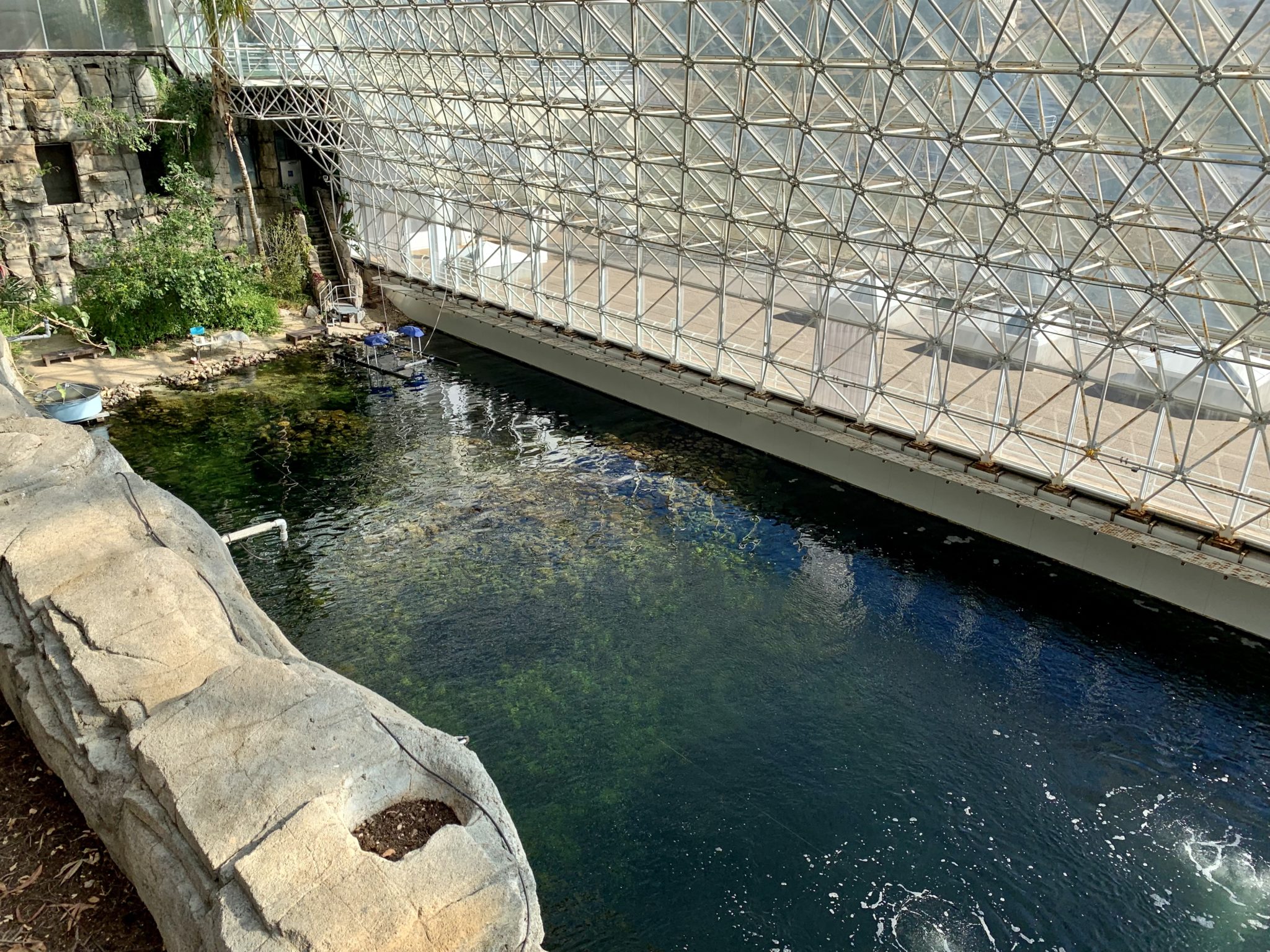
After leaving the forests, including an excellent rainforest that I did not photograph, we left Biosphere 2 via the new Conference Center. These two and three bedroom units house visiting scientists, conference attendees and student researchers.
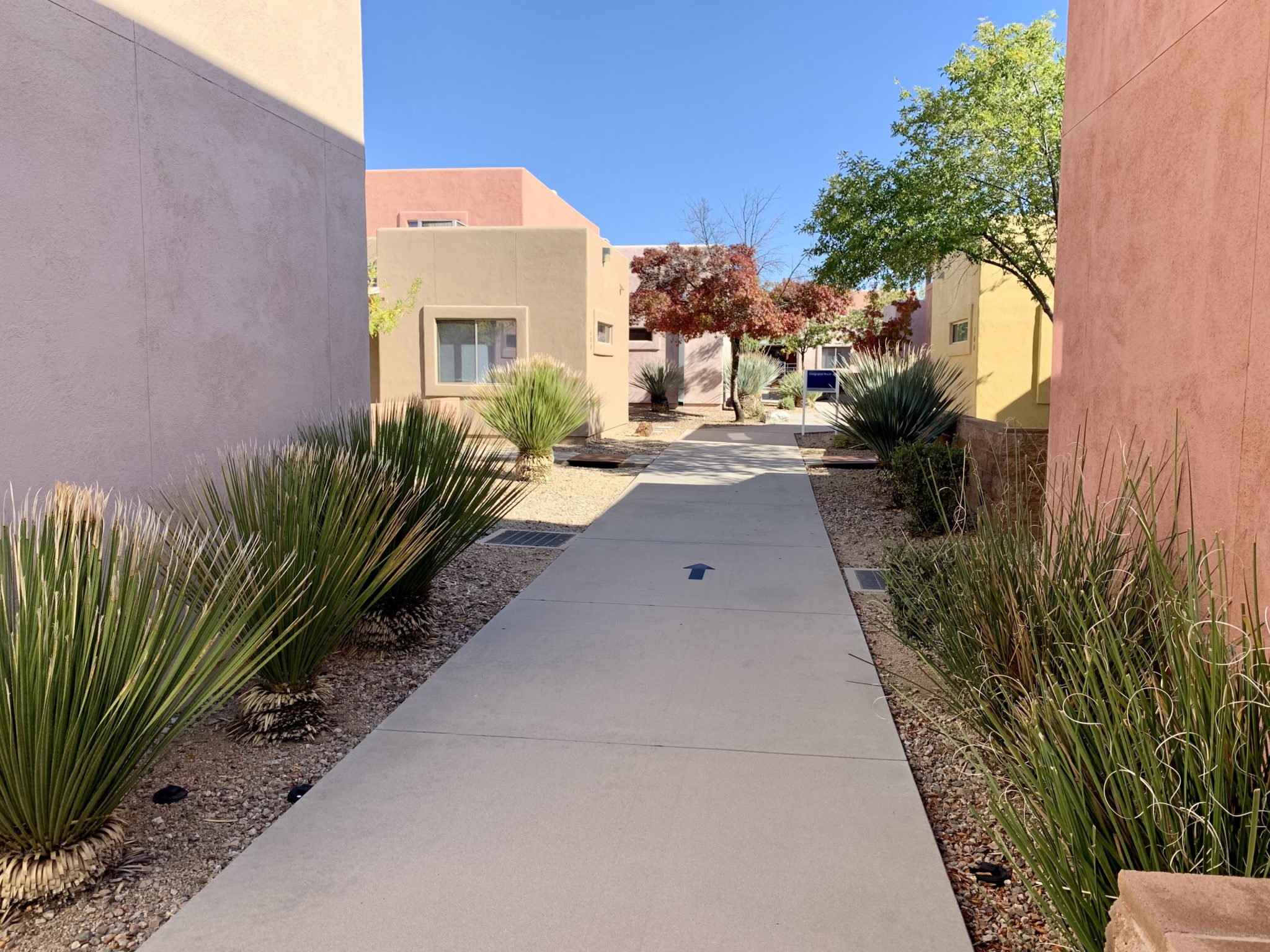
Want to see more? Check out this PBS story on Biosphere 2.